Disclosure: This article contains affiliate links. We may earn a commission from purchases at no extra cost to you, which helps our travel content.
The first rays of morning light pierce through the intricate lattice of the Giralda Tower, casting geometric shadows across Plaza Virgen de los Reyes that seem to dance with each passing minute. I stand transfixed, adjusting my aperture to capture this fleeting moment where Seville reveals her first secret of the day. After years of documenting mountain ranges and remote festivals, the architectural symphony of Andalusia presents an entirely different canvas—one where Moorish influences blend seamlessly with Spanish passion, all bathed in that legendary Sevillano light that has captivated artists for centuries. This spring journey through Seville wasn't just another photography expedition; it became a sensory pilgrimage through narrow, jasmine-scented callejones and across sun-drenched plazas where time seems to move according to its own languid rhythm.
The Golden Hour Kingdom: Timing Your Shots in Seville
Photographers often speak of the golden hour with reverence, but in Seville, this magical time transcends into something almost spiritual. The city's ochre-toned buildings and terracotta rooftops transform into liquid gold during the first and last hours of daylight, creating a luminous quality I've encountered nowhere else except perhaps in certain Himalayan valleys at sunset.
My daily ritual quickly became rising before dawn to capture the empty streets of Barrio Santa Cruz. Without the crowds, these narrow medieval passages reveal their true character—walls textured by centuries of whitewash, ornate iron balconies, and unexpected splashes of bougainvillea that pop against the warm stone. The contrast between shadow and light creates natural leading lines that practically compose your photographs for you.
Evening golden hour offers an entirely different mood. I found myself repeatedly drawn to the banks of the Guadalquivir River where the western light bathes the Torre del Oro in a honey-colored glow that explains its name—'Tower of Gold.' Position yourself on the opposite bank near Triana Bridge about an hour before sunset, and watch as the tower and its reflection become a single golden entity.
For these extended golden hour sessions, I relied heavily on my tripod, which proved invaluable for capturing those low-light moments without sacrificing image quality. Its lightweight carbon fiber construction meant I could carry it throughout the day without adding significant weight to my pack.

💡 Pro Tips
- Scout locations the day before to know exactly where to position yourself during golden hour
- Download a sun tracking app to predict exactly where light will fall between buildings
- Carry a polarizing filter to manage reflections, especially when shooting near the river
Architectural Marvels: Framing Seville's Cultural Crossroads
Seville stands as a testament to cultural amalgamation—where Islamic geometric precision meets Catholic grandeur, where Roman foundations support Renaissance innovations. This architectural diversity offers endless compositional possibilities that challenge and inspire the photographer's eye.
The Real Alcázar became my creative laboratory for exploring this fusion. I spent an entire day moving through its various courtyards and gardens, watching how the changing light transformed the space. The Patio de las Doncellas with its reflective pool offers perfect symmetry shots in early morning, while the intricate plasterwork of the Salón de Embajadores demands the soft, diffused light of late afternoon to reveal its detailed textures.
For interiors like the Cathedral and Alcázar, I found my wide-angle lens absolutely essential. The expansive spaces and intricate ceilings demand a broader field of view than a standard lens can provide. The challenge lies in managing the dramatic contrasts between the dimly lit interiors and bright sunlight streaming through windows—bracketing exposures became my constant practice.
What fascinated me most was discovering how to frame modern Seville against its historical backdrop. The contemporary parasol structure of Metropol Parasol (locally known as Las Setas or 'The Mushrooms') creates a startling juxtaposition against the ancient city. Shooting from beneath its undulating wooden structure toward the traditional skyline produced some of my most compelling compositional studies.
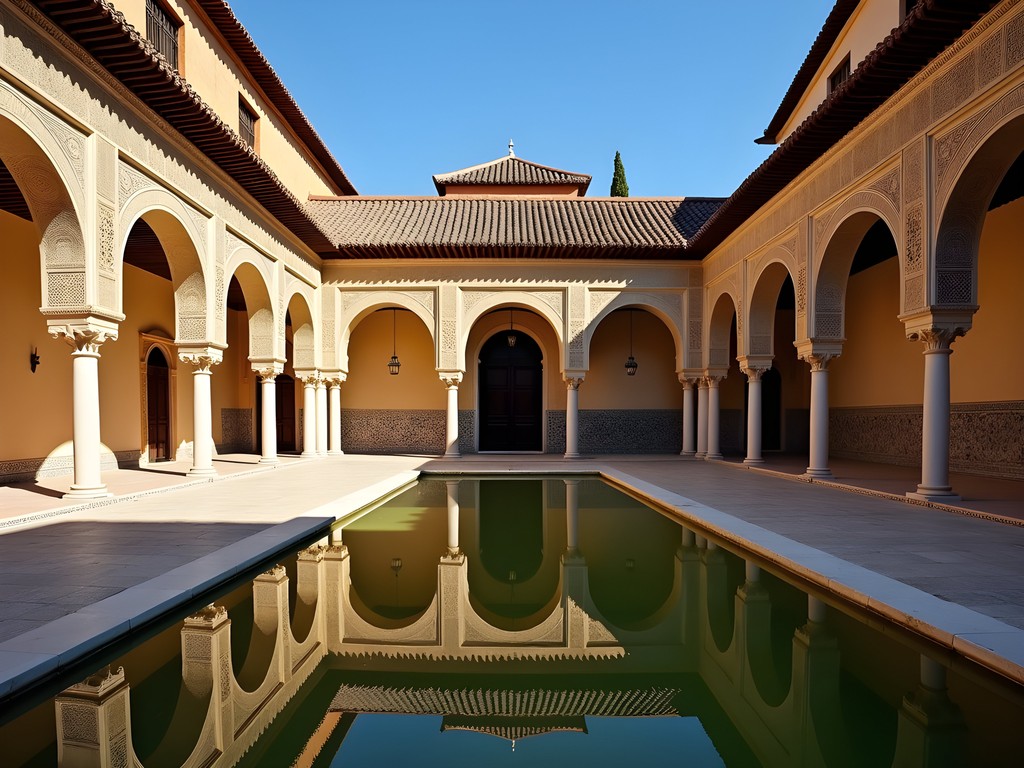
💡 Pro Tips
- Visit popular sites like the Alcázar first thing in the morning or during siesta time to avoid crowds in your shots
- Look for reflective surfaces like pools and tiles to create symmetry and double the visual impact
- Use people selectively in architectural shots to provide scale and human interest
Street Photography: Capturing Sevillano Spirit
While Seville's architecture provides a structured canvas, it's the city's vibrant street life that infuses photographs with authentic Andalusian spirit. Spring brings particular energy to the streets—locals and visitors alike emerge from winter hibernation, and the city pulses with pre-Feria anticipation.
Plaza de España became my favorite people-watching perch, where the curved architecture creates natural framing for human moments. Rather than focusing solely on the impressive building itself, I found greater storytelling potential in capturing interactions: elderly couples strolling arm-in-arm, flamenco dancers practicing near the canal, children chasing pigeons across the expansive plaza.
The Triana district across the river offers a less touristic glimpse into everyday Sevillano life. Its market buzzes with morning activity—fishmongers arranging their catches, animated conversations over coffee, the careful selection of produce. These moments require a different photographic approach than architectural shots. I switched to my prime lens for its speed and discretion, allowing me to capture candid moments without disrupting the scene.
One evening, following the sound of guitar music, I discovered an impromptu flamenco performance in a tiny square off Calle Sierpes. The dancers moved with such passion that I immediately understood why Seville is considered flamenco's spiritual home. Photographically, these moments present challenges—low light, fast movement—but capturing that precise instant when emotion, movement, and light converge creates images with soul that architectural perfection alone cannot achieve.
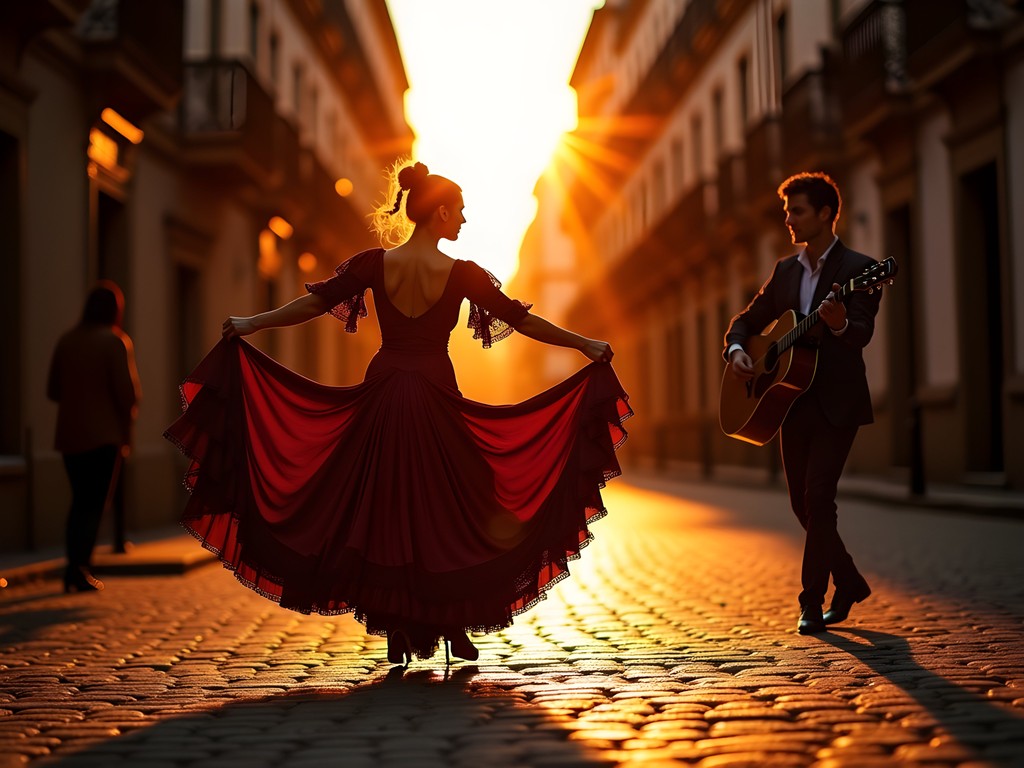
💡 Pro Tips
- Be respectful when photographing locals—ask permission when appropriate or focus on public performances
- Embrace imperfection in street photography; a slightly blurred movement often conveys more emotion than a technically perfect still shot
- Visit local markets early morning for authentic daily life scenes before tourist crowds arrive
Culinary Close-Ups: Documenting Andalusian Gastronomy
My artistic documentation has always extended beyond landscapes to the cultural expressions found on dinner plates. Seville's culinary scene offers a visual feast as colorful and complex as its architecture, and I dedicated several shooting sessions specifically to food photography.
The tapas culture here provides perfect photographic subjects—small, artfully presented dishes that tell stories of Andalusia's agricultural bounty and historical influences. I discovered that mid-afternoon light filtering through the windows of traditional tascas (taverns) creates ideal natural illumination for food photography. The warm directional light adds dimension to dishes like salmorejo (cold tomato soup) and berenjenas con miel (fried eggplant with honey).
Mercado de Triana became my morning classroom for ingredient photography. The vivid colors of pimentón varieties, hanging jamón legs, and mountainous olive displays create compelling compositional possibilities. I focused on capturing the hands of vendors—weathered, expert hands weighing saffron or slicing jamón so thin it's translucent—as these details convey authenticity that sterile food photos often lack.
For these close-up food sessions, my macro lens proved invaluable, allowing me to capture intricate details like salt crystals on fish, bubbles in olive oil, or the precise layering in a properly constructed montadito sandwich. The challenge with food photography in authentic settings (versus controlled studios) is working quickly before dishes cool or melt, and respecting other diners' experiences.
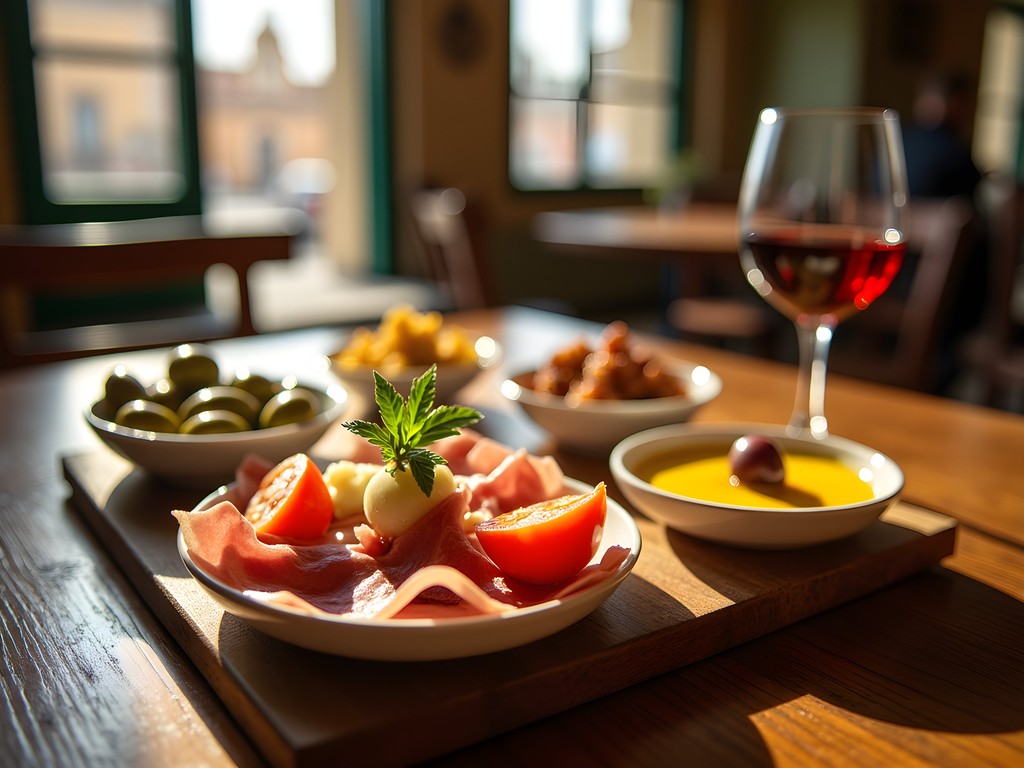
💡 Pro Tips
- Ask permission before photographing food vendors or chefs—most are proud of their craft and will often pose or demonstrate techniques
- Eat at off-peak hours (before 2pm for lunch, before 9pm for dinner) when restaurants are less crowded and staff more accommodating to photographers
- Look for natural window light rather than using flash for food photography
Beyond the City: Day Trips for Diverse Portfolios
While Seville itself offers endless photographic possibilities, I dedicated two days of my week to exploring nearby locations that provide contrasting visual narratives to the urban elegance of the capital.
The whitewashed hill town of Carmona, just 30 minutes from Seville, offers a completely different aesthetic. Here, the stark white buildings create a high-contrast canvas against the cerulean Andalusian sky. I arrived before sunrise to capture the town awakening as golden light gradually illuminated its white facades. The ancient Roman necropolis on the town's edge provides haunting compositional elements at sunrise or sunset.
In the opposite direction, the wild beaches of Doñana National Park present nature photography opportunities that balance the architectural focus of Seville. The marshlands host flamingos and countless migratory birds in spring, while the unspoiled dunes and pine forests create landscape possibilities distinct from the urban environment. Here, I switched to my telephoto lens to capture wildlife without disturbance.
These excursions required early departures from Seville, so I packed my camera backpack with everything needed for a full day of shooting in various conditions. Its customizable interior compartments protected my gear while hiking through Doñana's varied terrains, and the weatherproof exterior proved essential during an unexpected spring shower in Carmona.
The photographic value of these side trips lies in creating visual contrast within your portfolio. After days of capturing ornate details and urban energy, the minimalist compositions of whitewashed walls or the organic patterns of untouched coastline provide refreshing creative challenges and a more complete visual story of the region.
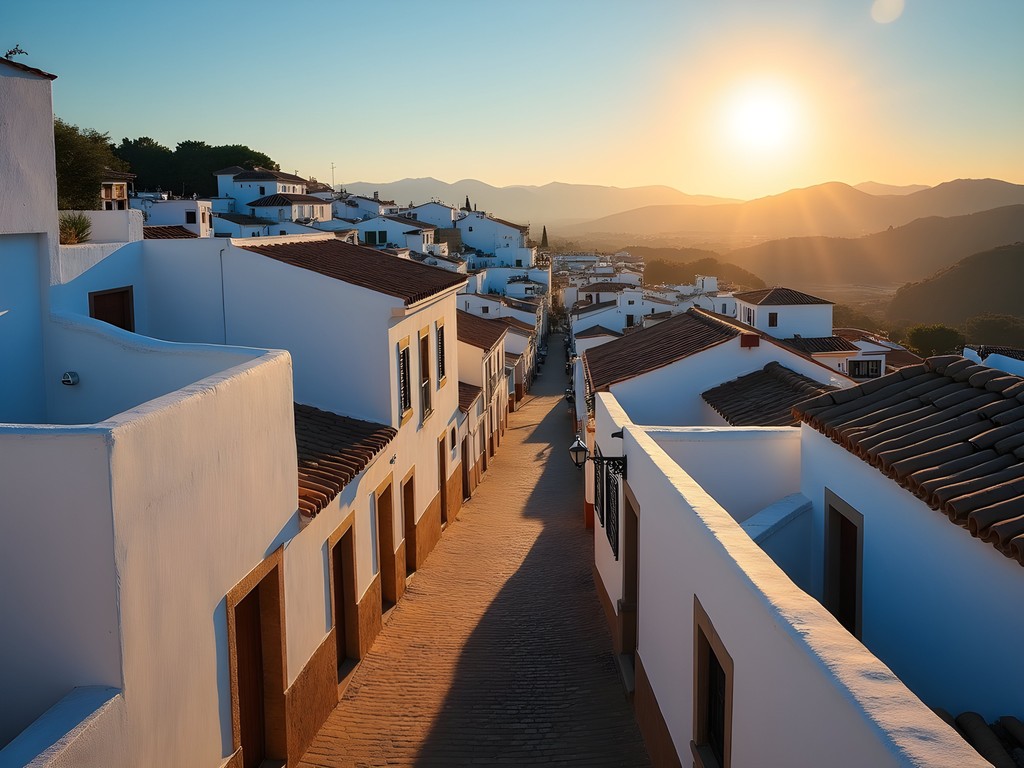
💡 Pro Tips
- Rent a car for day trips to maximize flexibility with shooting times and locations
- Research sunrise/sunset times and locations in advance for optimal lighting conditions
- Pack polarizing filters for coastal and landscape photography to manage reflections and enhance sky contrast
Final Thoughts
As I pack my memory cards—now filled with thousands of frames capturing Seville's multifaceted beauty—I realize that photographing this city has transformed my understanding of light itself. From the Himalayas to the Australian Outback, I've chased extraordinary illumination across continents, yet Seville's light possesses a character entirely its own—warm, honey-toned, and somehow both gentle and dramatic simultaneously. More than the iconic landmarks or vibrant street life, it's this distinctive quality of light that will draw me back to Andalusia. For fellow photographers seeking to capture Seville's essence, remember that patience rewards more than persistence here—this is a city that reveals itself gradually, through afternoon reflections on centuries-old tiles, in the shadow-play of ornate latticework, and across the animated faces of its people. Bring not just your camera, but your willingness to slow down and observe how light transforms the ordinary into the extraordinary in this golden corner of Spain.
✨ Key Takeaways
- Seville's golden hour extends longer than in many cities, offering exceptional light for photography in early morning and late afternoon
- Balance architectural photography with street scenes to capture the complete essence of Andalusian culture
- Include day trips to nearby locations for portfolio diversity and contrasting visual stories
- Spring offers ideal photographic conditions with manageable crowds, blooming gardens, and comfortable temperatures
📋 Practical Information
Best Time to Visit
Mid-March to early June, avoiding Holy Week unless specifically photographing the processions
Budget Estimate
€100-150/day including mid-range accommodation, meals, and local transportation
Recommended Duration
Minimum 5 days, ideally 7-10 days including day trips
Difficulty Level
Moderate (Involves Early Mornings, Late Evenings, And Considerable Walking)
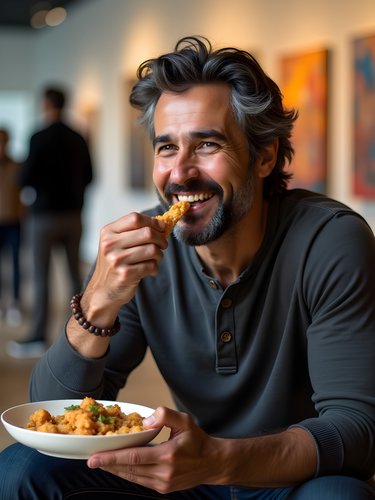
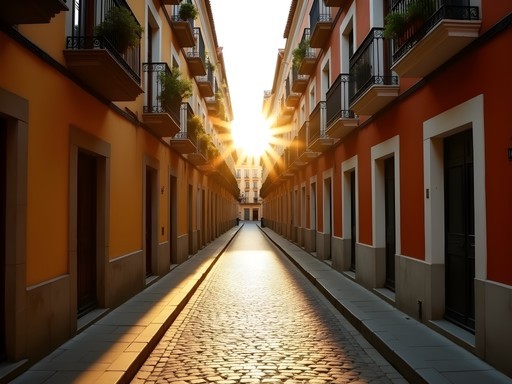
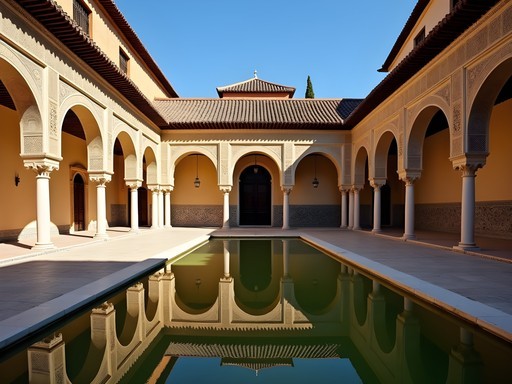
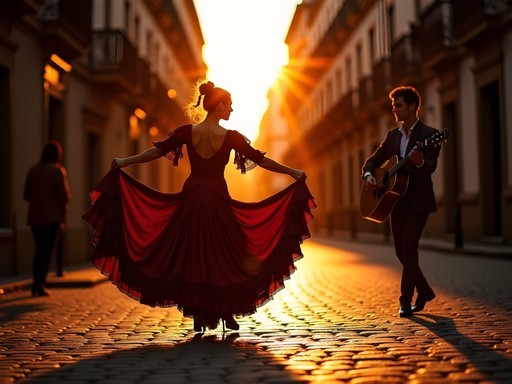
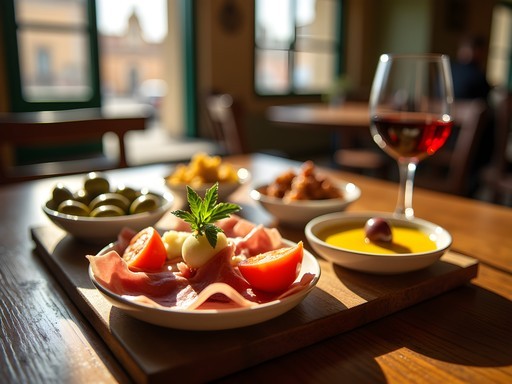
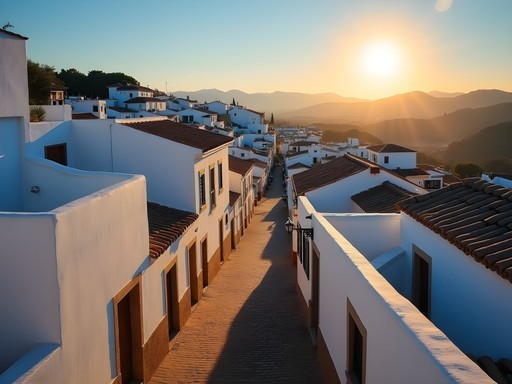


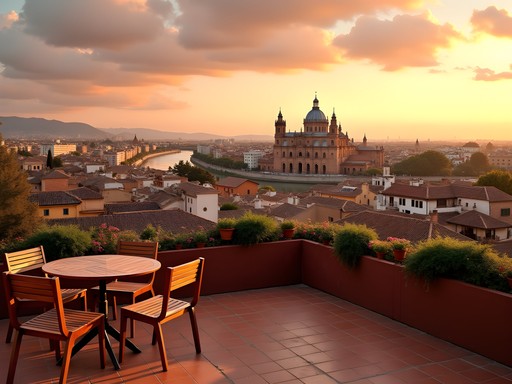
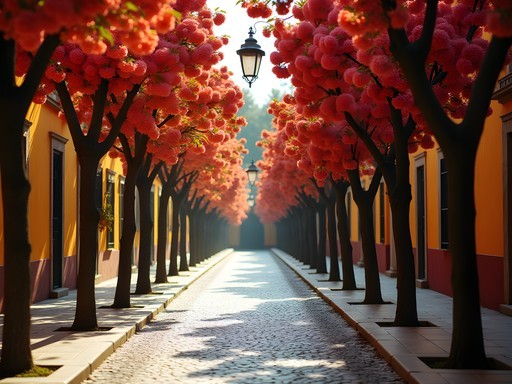
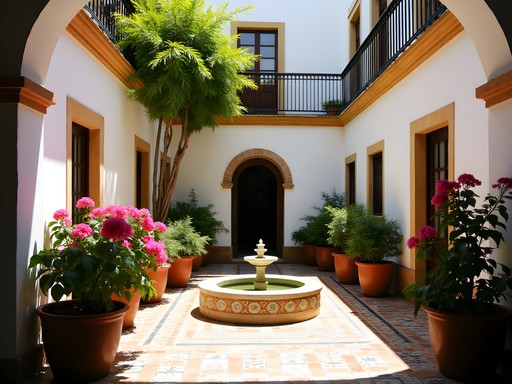
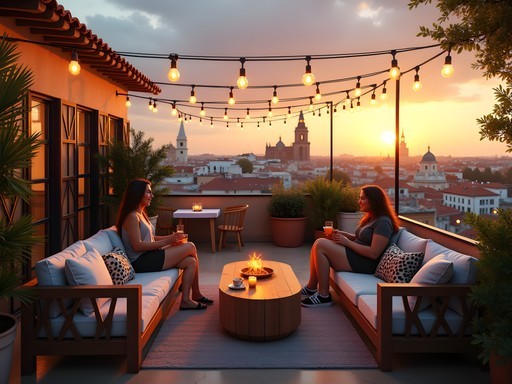




Comments
dreamstar
Beautiful photos! I'm planning a photography trip to Spain next year. How many days would you recommend for Seville to capture all these amazing spots? And did you visit any nearby towns worth photographing?
Jean Wells
@dreamstar I would suggest at least 4 days for Seville itself if photography is your focus. The light changes everything. Don't miss Córdoba (45 min by train) - the Mezquita offers extraordinary light patterns through its arches that any photographer would treasure.
happyphotographer
OMG your photos are INCREDIBLE!!! 😍😍😍 I'm heading to Seville next month and I'm totally inspired now! That shot of the orange trees against the white walls is pure magic. I've been debating whether to lug my big camera or just use my phone - after seeing this post, definitely bringing the real gear! Any tips for a photography newbie trying to capture that special Seville light?
Sage Dixon
@happyphotographer Not the author but my advice: wake up EARLY. The morning light in Seville is worth every painful alarm clock moment. And don't miss Barrio Santa Cruz's narrow streets around sunset!
happyphotographer
@Sage Dixon Thanks so much! Setting my alarm now! Any specific spots in Santa Cruz you'd recommend?
Jean Wells
What a thoughtful analysis of Seville's photographic potential. Having documented Andalusia extensively for my own travel series, I appreciate your technical insights on capturing the region's distinctive light qualities. The contrast between the harsh midday sun and the gentle evening glow presents unique challenges. I found that using a polarizing filter made a significant difference when photographing the reflective tiles at Plaza de España. Your section on culinary photography was particularly insightful - the vibrant colors of Andalusian cuisine deserve their own photographic study. Did you experiment with any specialized lenses for the interior shots of the Cathedral?
dreamstar
I've always struggled with indoor cathedral shots - they come out so dark! What settings do you recommend for those massive interiors?
starmaster
Those shadow patterns from the Giralda Tower are incredible! Your composition skills are next level.
exploreking
Just got back from Seville last month and your photos capture exactly what I was trying (and failing) to photograph! That golden light bouncing off the Cathedral is something else. I tried waking up for sunrise but kept hitting snooze - big mistake after seeing your morning shots. The churros place you mentioned near Triana Bridge was amazing too. Did you find the crowds at Alcázar made it hard to get clean architectural shots?
Sage Dixon
Amit, your piece transported me back to my own Andalusian adventure last spring! The way you captured that magical interplay of light and shadow in Seville is exactly what makes this city a photographer's dream. I spent three dawn sessions just in Plaza de España watching how the light transformed those colorful ceramic benches. Did you find yourself returning to certain spots at different times of day? I'm heading back in January and wondering if winter light offers something special that summer doesn't. Your section on architectural framing techniques is going in my travel notes!
happyphotographer
Winter light in Seville is gorgeous! Less harsh than summer and the golden hour lasts longer. Definitely worth the trip!
Sage Dixon
@happyphotographer Thanks for that insight! Now I'm even more excited for my winter visit. Did you have any issues with rain affecting shooting conditions?
photogeek42
If anyone's planning a photography trip to Seville, don't miss the view from Las Setas (Metropol Parasol) right before sunset. The whole city turns golden and you can capture amazing cityscapes with the cathedral in the background.
winterbackpacker6978
Thanks for the tip! Adding this to my itinerary for October!
Taylor Moreau
Amit, your photographic journey through Seville resonates deeply with my own experiences there. I found that investing in a polarizing filter made a tremendous difference when shooting the reflective tiles at Plaza de España and the Alcázar. The way you've captured the interplay of Moorish and Spanish architectural elements is particularly striking. For anyone planning a photography trip to Seville, I'd add that the early morning light at Parque de María Luisa offers spectacular opportunities when the morning mist rises from the ponds. Amit's advice on timing is spot on - Seville truly is a kingdom of golden hour light, but requires patience and planning. Excellent work capturing the essence of this magnificent city.
beachseeker
María Luisa in the morning is such a hidden gem for photos! Most tourists don't arrive until later in the day.
Taylor Moreau
Exactly! And the light filtering through those ancient trees creates the most beautiful dappled effect. Well worth the early alarm.
beachseeker
WOW! Your culinary close-ups section has me drooling and booking flights simultaneously! Those tapas shots are incredible - you've captured the textures so beautifully. I've been to Seville twice and completely agree about the light there being magical. There's something about how it bounces off those orange and white buildings that's impossible to describe until you see it. I found my best shots were actually from the Metropol Parasol at sunset - did you make it up there? The views across the city with that golden light are just *chef's kiss*
Amit Sanchez
Thank you! Yes, the Metropol Parasol (Las Setas) was incredible for sunset! I mention it briefly in the Golden Hour section - that warm light hitting the old city is pure magic. Food photography was actually the most challenging part - I kept wanting to eat everything before taking the shot!
sunnyadventurer
Adding Metropol Parasol at sunset to my itinerary now! Thanks for the tip!
travel_with_mia
Just wow! Your photos make me want to book a flight right now!
Venture X
Premium card with 2X miles, $300 travel credit, Priority Pass